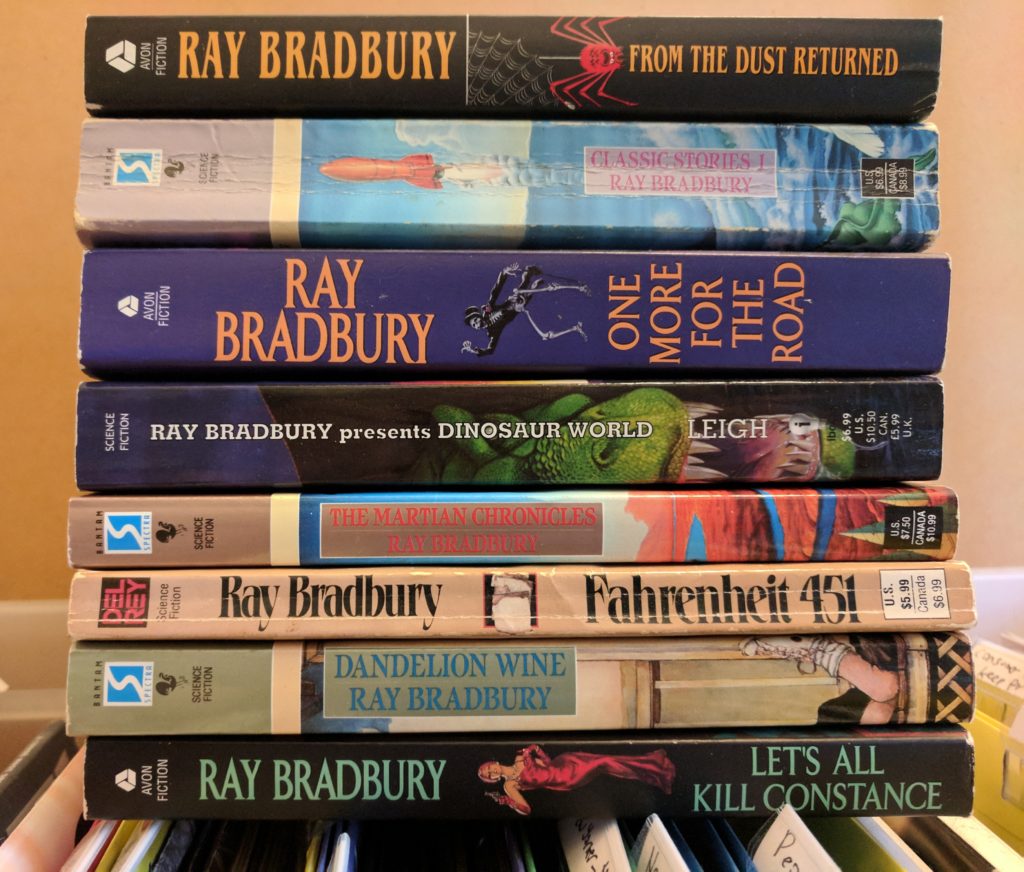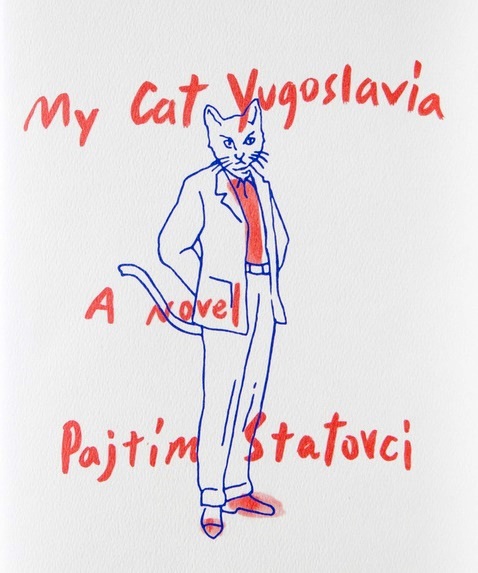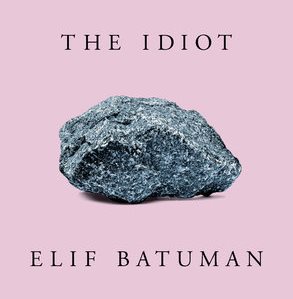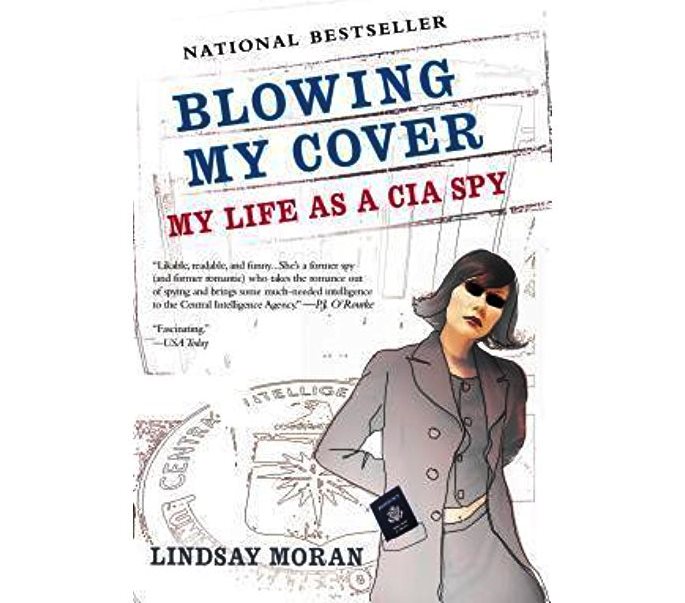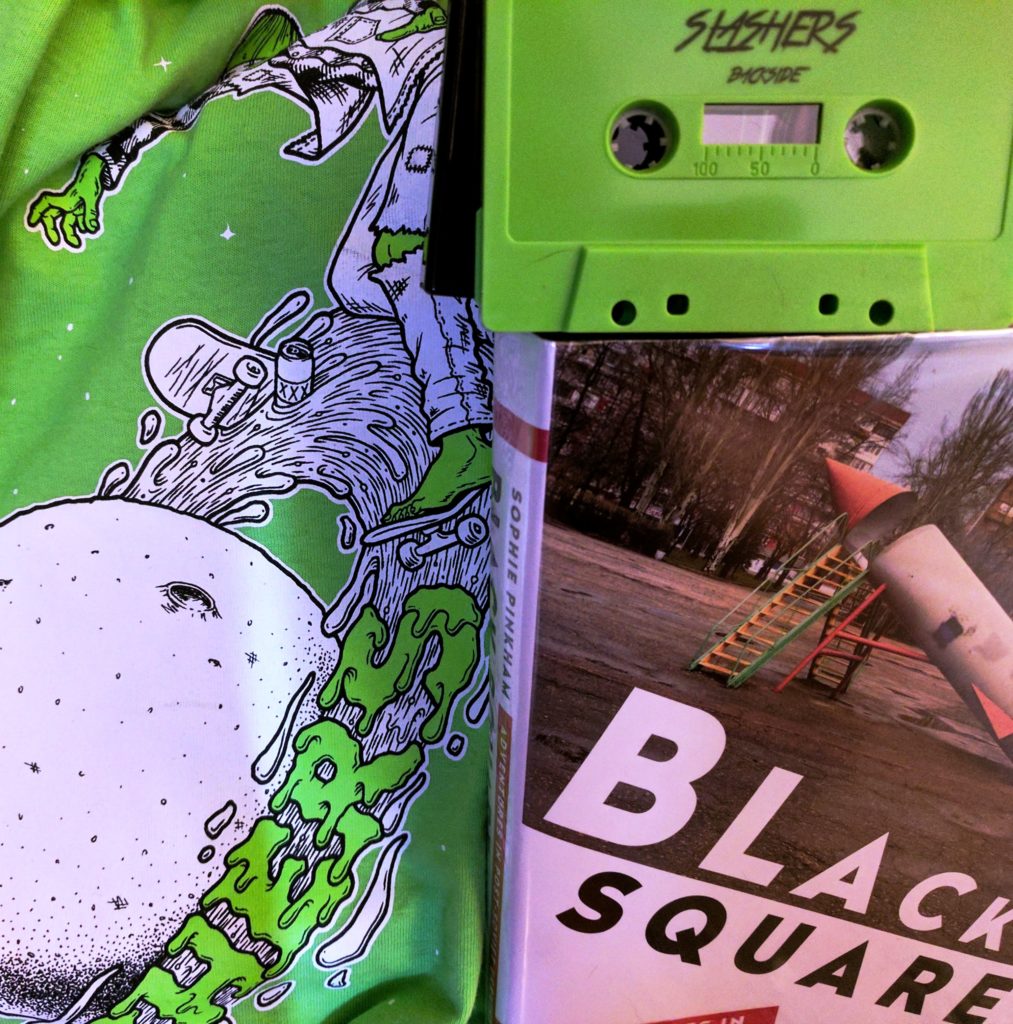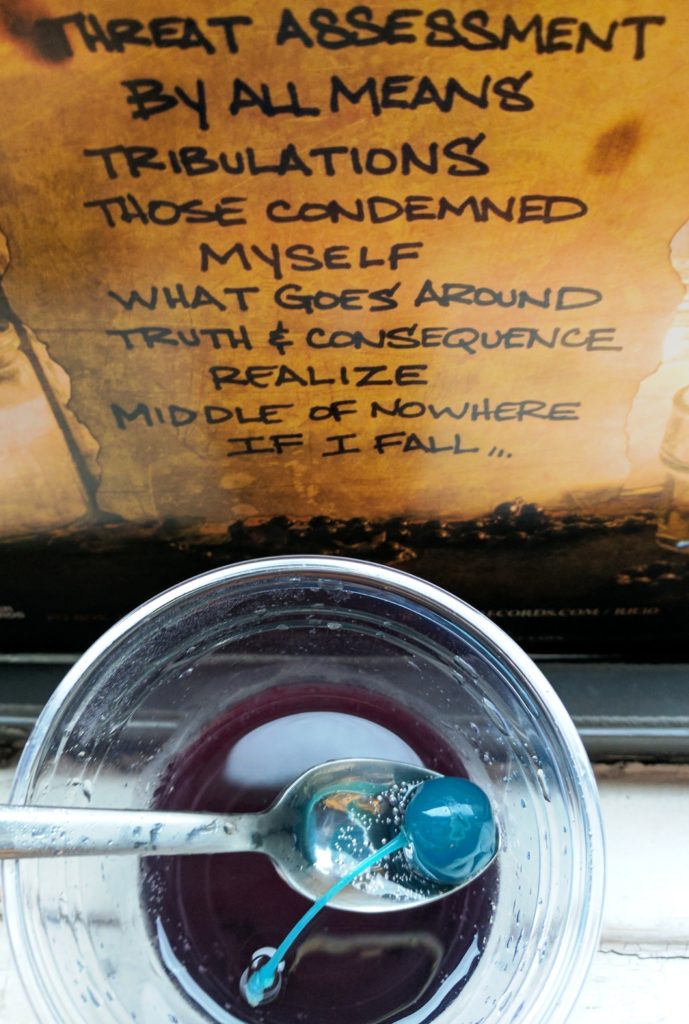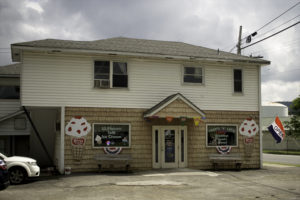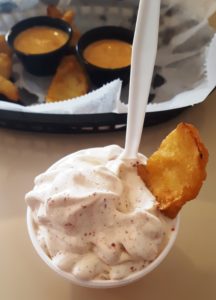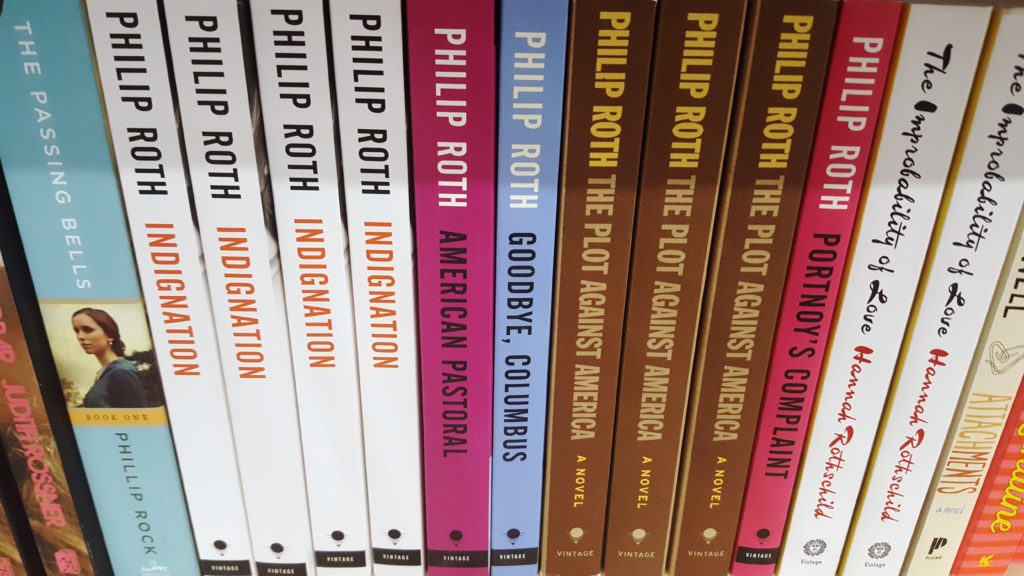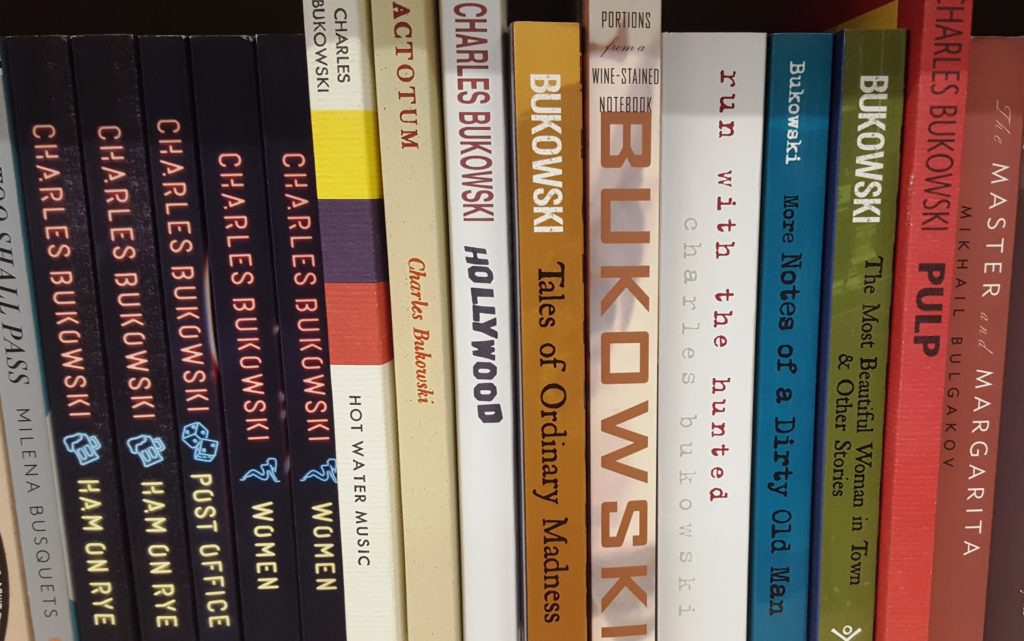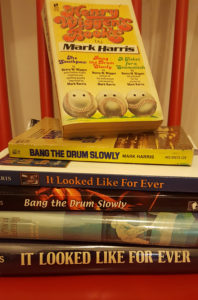This interview with Matt Melnick is the first of a new series on Serve ‘Em a Sentence in which people in hardcore talk about books. Our scene seems to harbor a higher percentage of readers than the general population, and I wanted to shine a light on fellow biblophiles.
This is part of the existing Paper Bullets section since I am out of Maximum Penalty puns.
Darkside NYC is playing some upcoming shows this summer – more info at the end of this interview.
Tell me about yourself and your reading habits:
My name is Matthew Melnick, 55 years old and I play guitar in Darkside NYC and Downlow. I’m married and have 2 children aged 7 and 13. I like to read from both analog and digital sources: books, short stories, magazines, technical manuals, social media, and news of the day. I try to read at least a few pages of a real book every day.
And what are you reading right now?
Right now I’m reading “Age of Miracles” by John Brunner and “Lucifer’s Hammer” by Jerry Pournelle and Larry Niven
I read a lot of science fiction and cooking/food books.
How did you become a frequent reader?
I’ve been an avid consumer of data for as long as I can remember and have loved reading books since I was a kid but I’ve only been a frequent reader in the past year. I haven’t really gotten into reading fiction until recently. I have a short attention span (which of course makes writing hardcore music perfect for me since most of my songs are only 1 or two minutes long), and I’ve always had trouble focusing and finishing books. I could only read short stories for a long time. About a year ago I happen to find a Ray Bradbury compilation of short stories on top of a trash bin. (who would throw that out?) I started reading it on the bus after dropping my daughter at school, really enjoyed it and my new era of reading began. Since then, I’ve been traveling with at least one book as much as possible, mostly when I’m on public transit. The background noise, the long length of time I’m sitting there and the desire to withdraw from the general population all help me dig in to a story and take me somewhere else.
20 years ago I used to be the book and magazine buyer at Tower Records on 4th St and Broadway in NYC (R.I.P.) and that expanded my reading habits extensively as well as my collection! There also happens to be 4 libraries on the bus route to my daughter’s school that I pass every day which makes it easy to get a book quickly when I want to learn about a topic or just want reference for something I’ve read online.
I have tons of ebooks and PDFs on my network at home but I just can’t get into reading on a phone or tablet. There’s something about holding an actual book in your hand, the tactile sensation of paper and the turning of pages that just makes the experience of reading enjoyable.
Is there any point in your life that books have saved you the way that people frequently credit hardcore for saving their lives?
I can’t say that books have saved me, but my book collection is an extension of my personality. Books are like air … I need them to survive. I’m always researching or trying to learn about something. I’m most comfortable when I’m surrounded by books and magazines. The guys in my band are also avid readers, which is really great. Writing and playing music with illiterate people sucks.
One thing that really bothers me lately is seeing every kid, every adult sitting with a phone in their face. I’m sure the percentage of book reading has dropped dramatically in the face of this new technology. When I read on the bus or train, I hope that even just one child might notice me reading and maybe decide to put down their phone and pick up a book for themselves. Reading hasn’t necessarily saved me, but maybe my love of reading could save someone else or be a trigger to get them busy with literacy. Reading real books is the new punk rock!
I originally thought of you for this series when I saw on Instagram the books you were rescuing from your neighbor’s trash. What’s some of the coolest stuff you have found that was discarded by others?
Ok, so I’ve been a “collector” for many years. I’ve found stuff in the trash that would shock you. Computers, furniture, books, music gear..the bigger and more insane the find, the more motivated I am to salvage it. Video game cabinets, pinball machines, stereos.. I’ve found it all.
Recently I was headed home and saw a giant pile of books tied up on the sidewalk. My eyeballs popped out! How can you just toss classic volumes of Shakespeare into the garbage? Trashing books should be illegal! Anyway, I immediately knew what my mission was. I looked around, found a stray cardboard box down the block, sorted through the books and carried my bounty all the way home from Flushing, a long ride on 2 buses but it was worth it. The following Friday I walked by again and more books. As I was going through it all, a lady came out to see what I was doing and we talked for a bit. Turns out, her boss had all these old books in his house, he recently passed away and she was throwing part of it out every week. So for 3-4 weeks, I managed to acquire lots of old cookbooks, novels, chess books, old news clippings and miscellaneous other cool reading material. And this whole experience got me into reading the works of William Shakespeare, which was just amazing. It seemed like destiny.
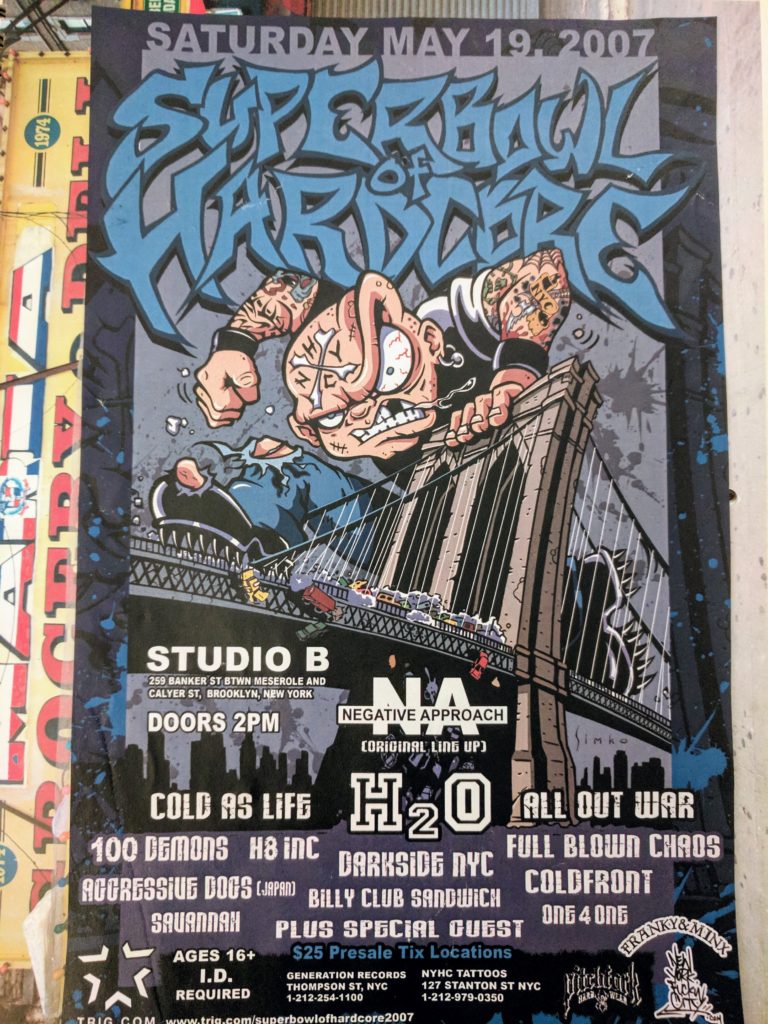
How many library cards do you have, what systems, and what is your favorite library branch?
I have a library card for the Queens library and 1 for the New York Public Library. Both my children and wife have library cards. My favorite branch is the main Queens Library in Jamaica, but I’m most frequently at the Queens Library in Flushing. That’s a good one too. Both have shelves of cooking books.
The Queens Library in Jamaica has a special section on its second floor that houses a collection of rare and hard to find Queens and NYC history which can be accessed by appointment only. One day I was in the library, saw a sign about it and asked to visit. All I had to do was leave my ID and I was escorted upstairs. I was the only one there! A visitor to the collection makes a request based on what they want to research and a librarian goes to the files and brings a stack of data to your table. I was given white gloves which were required to handle the original clippings and collections. What an incredible experience it was! I was able to research the history of Laurelton and Springfield Gardens, where I live now, and dig through newspaper clips and information dating back 60-70+ years. I was there for a few hours and barely scratched the surface. I need to make another visit there soon. I recommend it for anyone interested in the history of NYC.
What is your favorite book, and who is your favorite author?
I don’t really have one favorite author. I’m really enjoying the writing of Keith Laumer lately. I just read his book “A Plague of Demons” and it was really good. I just read “Do Androids Dream of Electric Sheep” by Philip K. Dick and loved it. “Genesis of a Music” by Harry Partch is a favorite of mine. I just got a 3 volume set recently called “These Are The Voyages: TOS” by Marc Cushman which is cool. I’m a big Star Trek fan and the volumes detail every episode from each of the 3 seasons.
When I was 14 years old, my favorite book was “Exotic Aquarium Fish” by William T. Innes. Me and my friends were big aquarium and cichlids lovers before we got into music and always referenced that book. Another favorite from 40 years ago is “African Cichlids of Lakes Malawi and Tanganyika” by Herbert Axelrod. I read that book 101 times back then.
Thoughts on reading books at shows between bands?
Haha! I could never do that. I’ve thought of doing it and actually tried a few times but the book never even came out of my bag. Too many distractions to contend with. Reading and playing gigs for me are polar opposites. My attention span sucks. I couldn’t read a single paragraph at a show.
And have you ever moshed with a book in your pocket?
That’s a good song title. No, never.
Is there any song that reminds you of a book, or vice versa?
Maybe listening to Rush’s album “2112” lyrically reminds me of reading a book. I love Emerson, Lake and Palmer and their record “Brain Salad Surgery” is very much like a book, most notable Karn Evil 9, all three impressions. Anthrax’s song “I Am The Law” obviously reminds me of Judge Dredd comics. I’m a fan of Dredd and 2000AD so that’s a song I like.
Best books to take on tour?
“How Not to Murder Your Band Members in Their Sleep” by Matthew Melnick
Out of all the bands you’ve played in, which of your bandmates had the best taste in books – and the worst?
Jason Madrock, drummer in Downlow, (now in Crazy Eddie) is an avid book and comic reader. He likes some really cool stuff. Mark Sokoll, the bass player in Darkside NYC is also a massive reader. He’s into war history books, Sherlock Holmes and other interesting topics. His wife is a librarian. The first time I visited him at his house, I was so blown away by his book collection, I surreptitiously took pictures of it when he was out of the room. I didn’t want to seem like a total geek but it was impressive. Rich O’Brien, singer of Darkside NYC is also an all around literate individual. He’s into Dostoyevsky and reads a lot of classics as well. He’s working on a song right now that’s based on Dante’s Inferno and the 9 circles of hell and just got a very nice version of the Divine Comedy as reference.
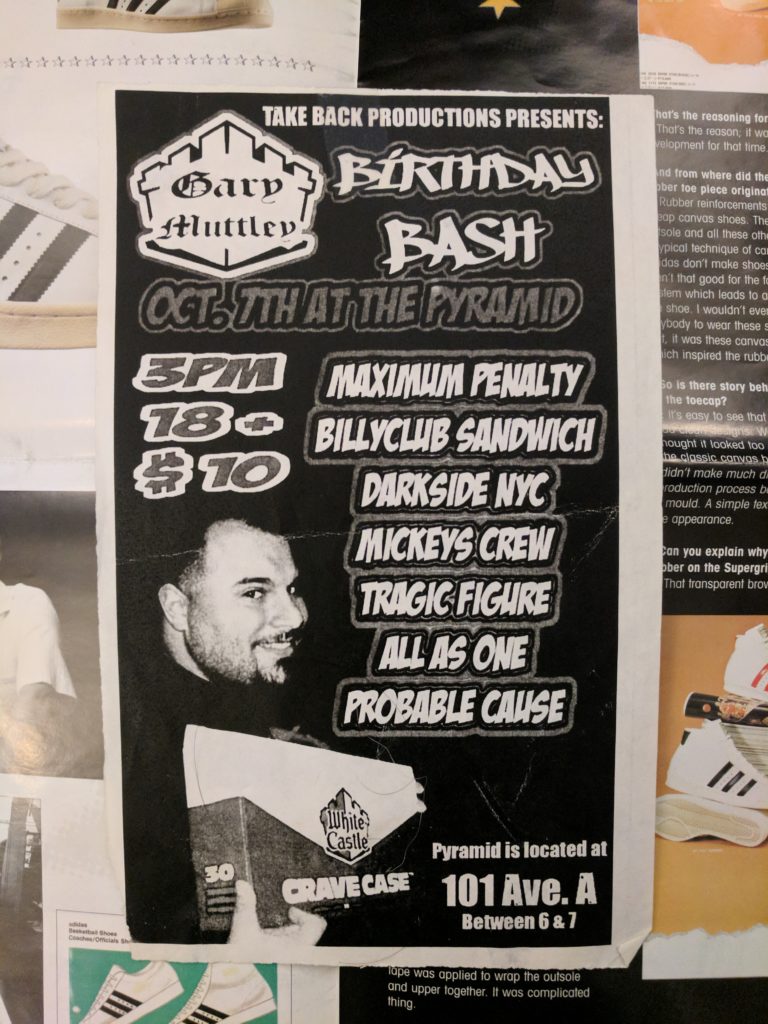
What do your kids like to read, and how do you encourage them to love reading?
My 7 year old daughter thankfully likes to read and reads both fiction and nonfiction. Books on coding, Minecraft, Beauty and the Beast … all sorts of books. For homework she has to read 15 minutes a night but usually reads more. My wife and I read to her as well. She also gets a bedtime story almost every night. My son is a tougher egg to crack. He’s on his iPad a lot and skateboards but doesn’t really read as much as I’d like. He’s been teaching himself Russian which counts toward his general literary and we’re trying to incentivize his reading with rewards so maybe he’ll get into it more.
Is there a book that you have read recently that was far outside of the scope of your usual reading habits, but you enjoyed it nonetheless?
Definitely the Shakespeare tragedies. They were a bit hard to get through, and I only read a few of his plays so far but I really enjoyed them. I found a series of books at the library called “No Fear Shakespeare” which puts the original book text side by side with a modern English translation and that really helped getting through a few parts that I didn’t quite understand. Shakespeare was actually a very funny dude.
Are there any underrated books about hardcore that you would recommend? (Bonus if they are still in print)
One of my all time favorite books is “Punk” (1978) by Isabelle Anscombe, Dike Blair and Roberta Baylee. I don’t know if it’s still in print. I doubt it. I used to read it and look at the pictures in that book all the time. There’s a picture in there of the Dictators that got me into the band back then. “Hardcore California” by Peter Belsito is another favorite. Im sure there are a few more but nothing that blew me away. I don’t really read books about hardcore.
What do you say to people if they say you have too many books?
I say “GET THE FUCK OUT OF MY HOUSE!”
Seriously, no one’s ever said that to me, not even my wife, who’s disciplined me quite strenuously to harness my “collector” tendencies, but she’s quite an active reader in her own right. She has many books of her own. She tells me I have too many records, but not books. We’re a book loving family. My wife incidentally, is much more of a dedicated and focused reader, both past and present than I’ve ever been.
Lately I’ve noticed people starting to disdain owning or collecting things, alongside a passion for decluttering …
That does not compute.
Do you think books are immune to this societal mania?
Unfortunately, with digital media becoming more and more predominant, books seem to be going the way of the dinosaur but just like excellent food, incredible art and kick ass music, you can only get complete satisfaction with the real thing. As long as humanity exists, real paper books will exist.
Any last literary thoughts you would like to share?
Yes. Try to put down your iPad or iPhone for a little bit and pick up a book to read, even for 15 minutes. A few pages. All the memes will still be there when you get back.
Get a library card and take out a book.
If you need to bring someone a gift, instead of beer, wine, weed or flowers, bring them a book.
Donate books, don’t trash them. You wouldn’t ever think to toss your limited edition swirly colored vinyl Judge 7” in the trash now, would you?
Give a child a book and read with them.
Congratulations for reading all the way through this rambling interview. Books rule!
Upcoming Darkside NYC shows, summer 2018:
June 17 – Lucky 13 Saloon in Brooklyn, NY
with Sex and Violence aka Carnivore AD
https://www.facebook.com/events/2072755032968129??ti=ia
June 30 – Irish Wolf Pub in Scranton PA
With Mad Diesel
July 22 – Mike Scondotto’s birthday show at The Hideout, Brooklyn NY
Free show/Sunday matinee
With The Last Stand and Crazy Eddie
https://www.facebook.com/events/2026991687622923??ti=ia
August 12 – Ieperfest in Ieper, Belgium
http://www.ieperfest.com/

